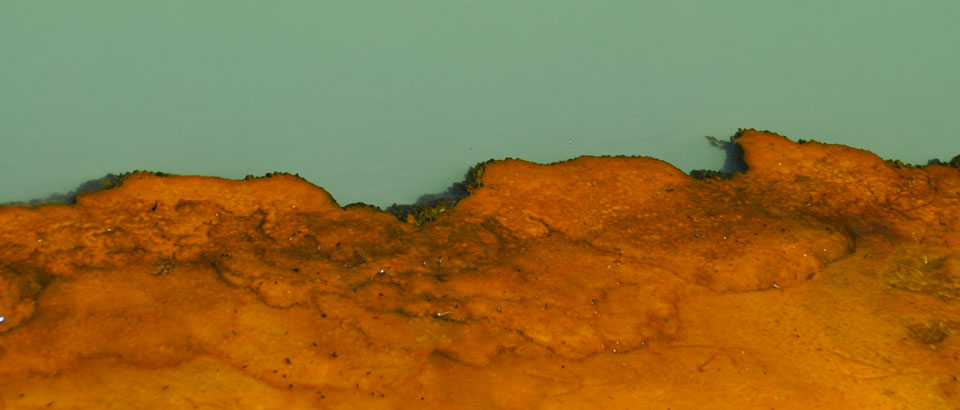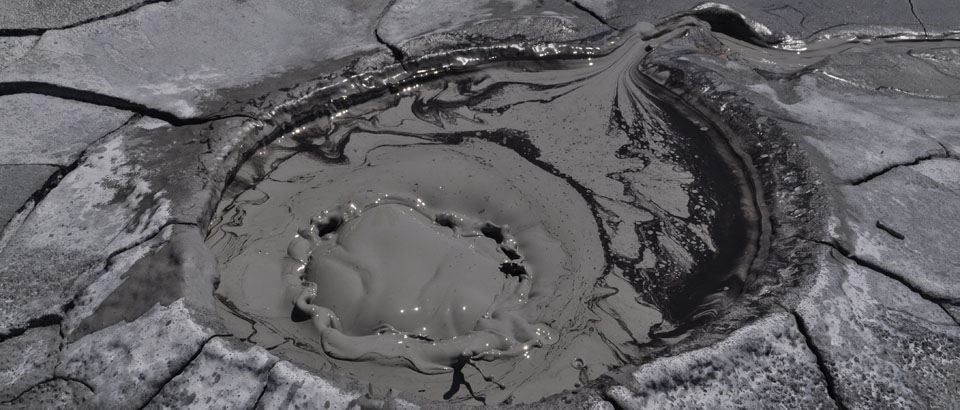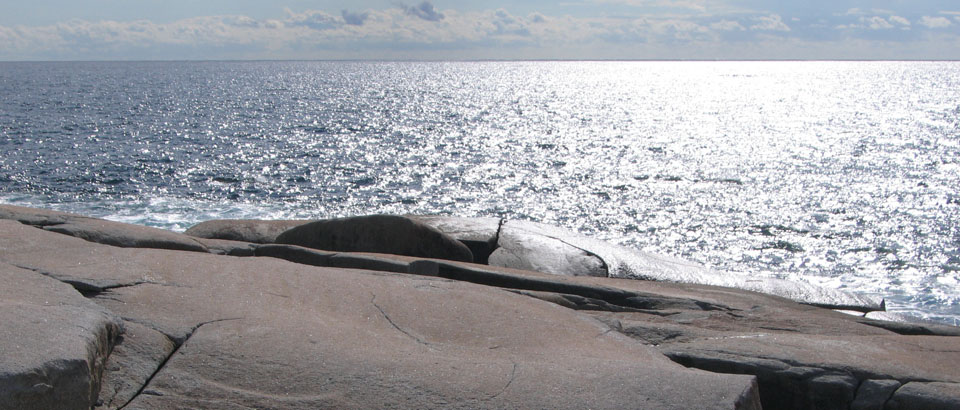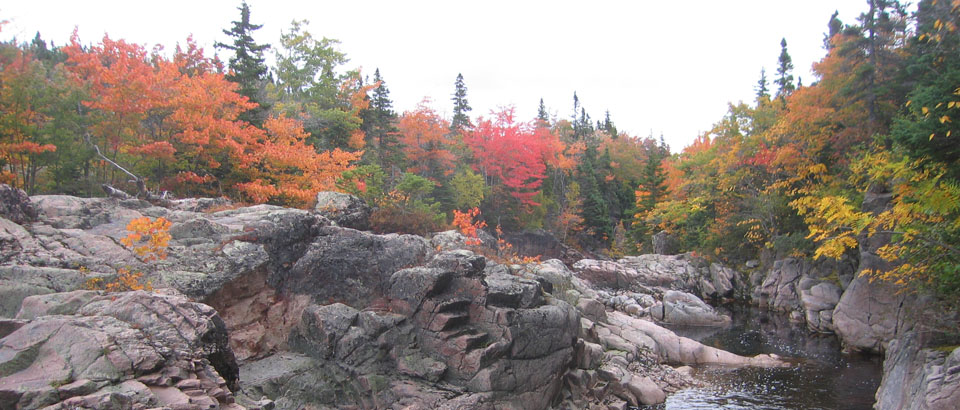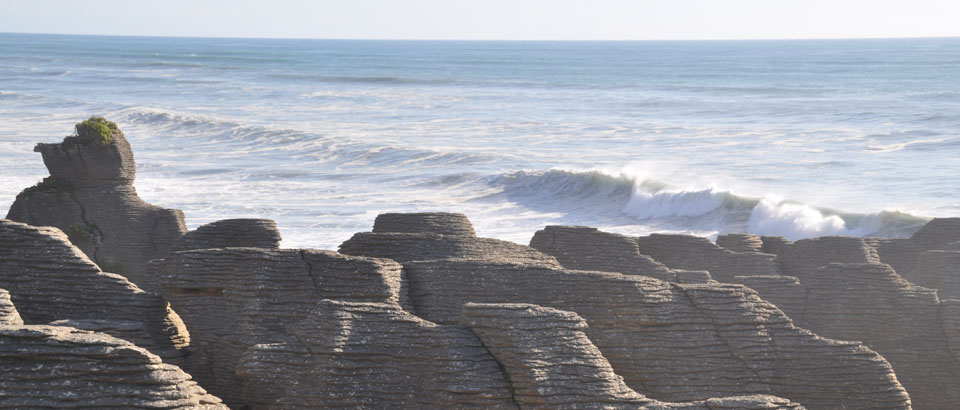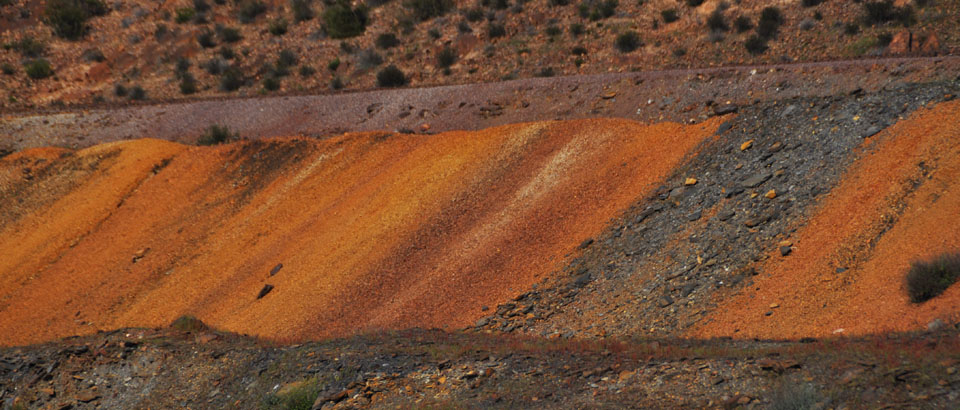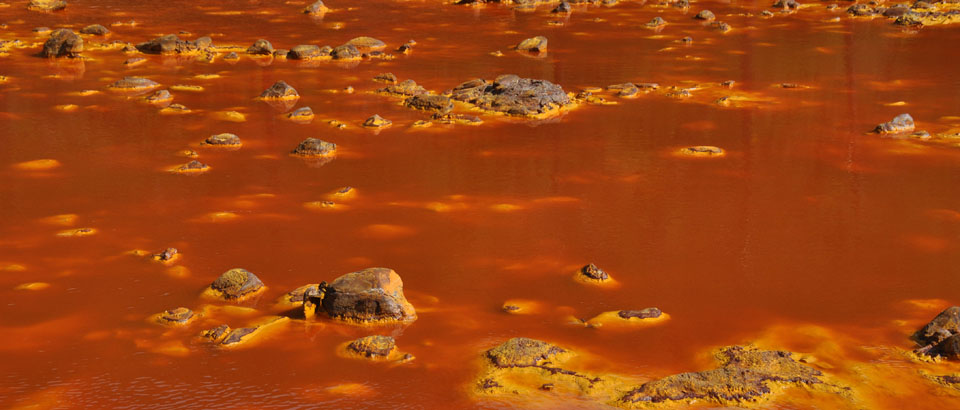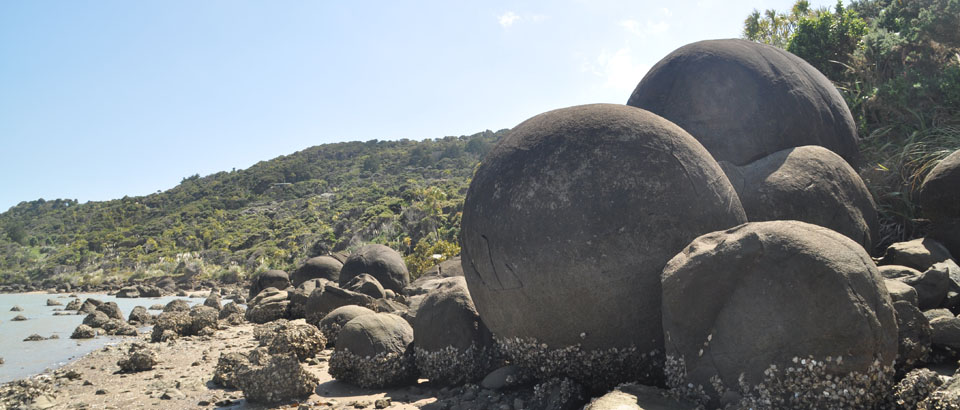Congresos recientes en los que ha participado Gabriel Gutiérrez-Alonso, enlaces y abstracts de trabajos presentados
Recent meetings in which Gabriel Gutiérrez-Alonso has participated with links to the meeting and abstracts of the presented research
2019
GeoMünster 2019, Past, Present,Future (Munster, Germany, September 2019)
How did Pangea behave? Rethinking some tectonic processes in a superplate world (Keynote)
GAC-MAC-IAH Quebec 2019 Where geosciences converge (Quebec, Canada, June 2019)
Magmatic recycling along 50 My in the Variscan belt: orogenic melt reworking in NW Iberia
EGU General Assembly 2019 (Vienna, Austria, April 2019)
Airborne LiDAR and UAV-derived data for mapping Roman gold mining infrastructure: New insights into the anthropogenic landscape evolution in NW Spain
Geomorphological features: Behind the tracks of Roman gold mining in NW Spain
2018
X All-Russian Science Conference. Petrology of Magmatic and Metamorphic complexes (Tomsk, Russia, November 2018)
Contrasting metamorphic gradients: Barrovian-type vs. high-pressure metamorphism. An example on the northern margin of Gondwana (NW Iberia)
An extensive K-bentonite as an indicator of a super-eruption in northern Iberia 477 My ago
LXIV Sesión Científica de la Sociedad Geológica de España (Ávila, June 2018)
U-Pb geochronolgy of the deformed Juzbado Granite(Salamanca, NW Spain)
2017
Petrology of Magmatic and Metamorphic Complexes (Tomsk, Russia, December 2017)
Textural evolution and P-T relations in eclogite to retroeclogite transition: a case study from the NW Iberian Massif
Thermodynamic modelling of metamorphic processes: state of the art in pseudosection approach
Episodic melting and magmatic recycling along 50 Ma in the Variscan belt linked to the orogenic evolution in NW Iberia
VII Jornadas de Investigadores del Valle del Duero (Burgos, Noviembre 2017)
Nuevos datos geológicos y cartográficos de la minería aurífera romana en el noroeste peninsular: El valle del Jamuz como punto de inicio de las explotaciones leonesas
International Meeting of Sedimentology, 33rd IAS & 16th ASF Joint Meeting (Toulouse, France, October 2017)
Evaporite deposits and intraclastic breccias in the remnant of the Rheic Ocean during the mid-Carboniferous boundary (Barcaliente Fm, Cantabrian Zone, NW Spain)
12th International Eclogite Conference, (Are, Sweden, August 2017)
UHP metamorphism in the Marun-Keu Complex (Polar Urals, Russia)
Eclogite to retroeclogite transition: a tribute to D.E. Vogel´s research (Cabo Ortegal Complex, NW Iberian Massif)
2016
Petrology of Magmatic and Metamorphic complexes (Tomsk, Russia, December 2016)
UHP metamorphism in the Polar Urals, evidences from the Marun-Keu Complex (Russia)
The Use of UAVs (Unmanned Air Vehicles) in geology
The magmatic history of the West European Variscan Belt. Pulsated vs. continuous magmatic events
IX Congreso Geológico de España (Huelva, Spain, September 2017)
El pliegue de Llumeres: aplicación de los drones para el estudio geológico estructural 3D
Drones: Nuevas aplicaciones geomáticas en el campo de las Ciencias de la Tierra
Sistemas de fallas tardi-oroclinal Cantábrico: modelación de su influencia en la evolución alpina de Iberia
IX Congreso Internacional sobre Minería y Metalurgia históricas en el SW europeo: Nuestras
raícesmineras – Sociedad Española para la Defensa del Patrimonio Geológico y Minero (SEDPGYM)
(Madrid, June 2016)
Geomática aplicada a la prospección y valoración arqueológica de yacimientos auríferos romanos en el Noroeste peninsular (Distrito Aurífero del Valle del Eria, León).
Thermodynamic modelling of metamorphic processes: pseudosection approach
Moscow International School of Earth Sciences (Moscow, Russia, May 2016)
Thermodynamic modelling of metamorphic processes: pseudosection approach
Long lived episodic magmatic history in the Variscan belt of Western Europe
Geolodía 16
Vídeo Promocional-Watch the promotional Video
Arthur Holmes Meeting 2016 – The Wilson Cycle: Plate Tectonics and Structural Inheritance During Continental Deformation (London, Great Britain, May 2016)
And the Variscan orogen buckled
Metamorphic Studies Group Research in Progress Meeting (Keyworth, UK, March, 2016)
Pseudosections are not the be-all and end-all, but they represent an advance in quantifying orogenic processes
2015
II Congreso Internacional de minería del lapis specularis (Cuenca, Spain, September 2015)
Variscan 2015: The Variscan belt: correlations and plate dynamics (Rennes, France, June 2015)
GAC-MAC-AGU Joint Assembly (Montreal, Canada, May 215)
Geolodía 15
Vídeo Promocional-Watch the promotional Video
2nd Annual Meeting of the Commission of Petrology, Geochemistry and Geochronology of Igneous and
Metamorphic Rocks (Agdz, Morocco, March 2015)
2014
2014 GSA Annual Meeting
19-22 October ( Vancouver, Canada)
Magmatic pulses in Iberia during Pangea amalgamation: Collision, exhumation and orocline development igneous fingerprints
Flexural accomodation of oroclinal buckling at the core of Pangea: A structural study of the Cantabrian Orocline, NW Iberian Massif
XV Congreso Internacional sobre Patrimonio Geológico y Minero
25-28 Septiembre ( Logrosán, Cáceres, Spain)
Identificación de antiguas labores mineras romanas en el noroeste peninsular con tecnología LiDAR de alta resolución
Gondwana 15, North meets South
14-18 July ( Madrid, Spain)
-Whence come detrital zircons in Siluro-Devonian rocks from Iberia?
-Gondwana to Pangea dynamics in Western Europe: roll-back vs. ridge subduction, or both?
-P-T-t constraints and geodynamic implications from blueschists and eclogites of the north Gondwanan margin in Iberia (Malpica&-Tui complex, Galicia
-To be or not to be Armorican: the Paleozoic Iberian question
-And the Variscan orogen buckled
-New Structural and Paleomagnetic constraintson the Western Variscan oroclines
-Sedimentary record of the amalgamation and break-up of Pangaea: U-Pb detrital zircon geochronology and provenance of Carboniferous-Triassic siliciclastic rocks, SW Iberia
-Flexural accommodation of oroclinal buckling: A structural study of the Cantabrian Orocline, NW Iberian Massif
-Alpine reactivation of the North Gondwana margin: insights from analogue modelling of late Variscan structures in Iberia
-Large Upper Cambrian rhyolite olistoliths locked in theEarly Carboniferous Variscan syn-orogenic melange of the parautochthonous realm of the NW Iberian Massif
-Evolution of Phanerozoic Europe from an Hf isotope perspective: implications for supercontinental and Wilson cycles
-The magmatic response to the Variscan Belt collapse in Iberia. U-Pb LA -ICP-MS ages of syn-kinematic granitoids in the CIZ (Tormes Dome, western Iberia)
2014 NAC conferences (Nederlands Aardwetenschappelijk Congres)
8-9 Abril ( Koningshof, Veldhoven, Holland)
-And the Variscan orogen Buckled
-The Ediacaran-Permian detrital zircon record in the northern margin of Gondwana (Iberia): Tracing accretion, dispersion and collision involving enigmatic terranes
2013
2013 AGU FALL MEETING
9-13 Diciembre (San Francisco, USA)
And the Variscan Orogen Buckled
Daniel Pastor-Galán, Thomas Groenewegen, Gabriel Gutiérrez-Alonso, Cor G Langereis
Oroclines are the largest scale folds in nature, and as folds can be produced by bending or by buckling. The most commonly invoked bending mechanisms are indentation (the Himalayan syntaxes) and slab roll-back (The Calabria Arc) whereas buckling usually are commonly related with collision of the apex of ribbon continents along strike (Alaskan oroclines).
In Western Europe the tectonostratigraphic zonation of Variscan orogen shows a complex “S” shape pattern recently interpreted as a double orocline consisting of a northern and southern arc. The northern arc, known as Cantabria-Asturias Arc or Cantabrian Orocline, was developed after closure of the Rheic Ocean and the building and collapse of the Variscan orogenic edifice and, therefore, is considered post-Variscan in age. On the other hand, neither the geometry nor the kinematics of the so-called Central Iberian orocline, situated at the south of the Iberian peninsula are properly known. However, it seems reasonable to think that both oroclines developed at the same time as other coupled oroclines, such as the New England oroclines or the Carpathian oroclines.
The particular paleogeography of the Variscan belt in Pangea and the kinematics of the oroclinal formation make impossible the mechanisms of indentation or buckling of a ribbon continent. The occurrence of an intense syn- and slightly post-Cantabrian orocline magmatic event (310–290 Ma) has been linked to the development of the orocline(s) due to the particular spatial-temporal distribution of these post-tectonic granitoids and its isotopic signature which would imply that the oroclines (if synchronous) are thick-skinned. This magmatic pulse has also been interpreted as due to slab roll-back. We present widespread evidences of buckling around the whole orocline at different lithospheric levels and new insights of the particular geometry of the southern orocline which is difficult to reconcile with a roll-back related origin. Therefore, a major change in the stress field, from the Variscan (E-W shortening in present day coordinates) to the oroclinal development (N-S in present-day coordinates) is required to produce buckling of the Variscan orogen, what caused this dramatic stress field is still unknown, but following the tectonic settiong of the Carboniferous-Permian, it was likely related with a global scale process.
2013 GSA ANUAL MEETING
27-30 Octubre (Denver, USA)
OROCLINES: WHAT WE KNOW AND WHAT WE DON’T
GUTIERREZ-ALONSO, Gabriel, , WEIL, Arlo Brandon, , PASTOR-GALÁN, Daniel, and JOHNSTON, Stephen T.
In the tectonic community, accepted paleogeographic reconstructions are founded in the idea of continental lithospheric rigidity. Nevertheless, recent work has conclusively shown that continental lithosphere can accommodate large deformations, especially related with differential rotations around vertical axes. Present-day geodetic measurements and other, mainly paleomagnetic, evidences indicate that throughout earth’s history, continental lithosphere has undergone dramatic shape changes – identified as oroclines – whose origins and geodynamical implications are not fully understood. Probably the best-known orocline in the world is the Cantabrian Orocline that formed ca. 300 My ago. Studies of the Cantabrian Orocline indicate that oroclinal development is lithospheric in scale with profound implications for geodynamic processes in the lithospheric mantle – including its ultimate delamination and subsequent replacement. Similar processes can be imaged with seismic tomography in present-day developing oroclines – e.g., in the Vrancea region (East Carpathians) where mantle lithospheric delamination is presently occurring. The kinematic and dynamic lithospheric-scale evolution of many of the world’s oroclines remain enigmatic (e.g., Andes, Alaska, East Australia, and the peri-Mediterranean realms). It is clear that much work remains in order to better understand how, when and what the driving forces are that produce oroclines. This is particularly relevant when it comes to incorporating initial oroclinal geometries into paleogeographic reconstructions and to generating a better understanding of lithospheric mantle involvement in oroclinal development, orogeny and continental construction. Finally, our current understanding of oroclines should be incorporated into the Earth Science paradigm and should be used to modify our basic tectonic model of a rigid continental lithosphere.
THE EDIACARAN-PERMIAN DETRITAL ZIRCON RECORD IN THE NORTHERN MARGIN OF GONDWANA (IBERIA): TRACING ACCRETION, DISPERSION AND COLLISION INVOLVING ENIGMATIC TERRANES
GUTIERREZ-ALONSO, Gabriel, FERNANDEZ-SUAREZ, Javier, PASTOR-GALÁN, Daniel, SHAW, Jessica, and HOFMANN, Mandy
The north Gondwanan passive margin sequence of the Iberian Massif is one of the most complete and well-studied Ediacaran-Paleozoic sections in the world. Detrital zircon U-Pb age analysis of 20 samples spanning each geologic time period from the Ediacaran through Permian have provided a consistent set of group ages, mainly Ediacaran-Cryogenian (ca. 0.55-0.8 Ga), Tonian-Stenian (0.85-1.2 Ga), Paleoproterozoic (ca. 1.8-2.2 Ga) and Archean (ca. 2.5-3.3 Ga), with large variations in relative age proportions recording provenence variations over 300 My. Detrital zircon data 1) record the transition from active volcanism of the Cadomian-Avalonian arc to stable platform following the separation of Avalonian terranes and the opening of the Rheic Ocean, and 2) track the exhumation of different rock suites over the course of Variscan orogeny and the development of the Ibero-Armorican Arc. Variations in detrital zircon populations through the Paleozoic reflect changes in source areas and/or variation inproportions of recycled sediments along the northern Gondwanan margin. A high proportion (up to ca. 55%) of Tonian-Stenian age zircons in Ordovician, Silurian and Devonian sedimentary rocks that could not have been sourced via recycling from the underlying strata may provide record of an otherwise unpreserved Tonian-Stenian arc terrane largely exposed within the NE African realm (in or around the Arabian Nubian shield) throughout the Paleozoic. The Ediacaran to Permian clastic sedimentary rocks of NW Iberia and their detrital zircon populations are witness to a complete Wilson cycle from the Ediacaran subduction to the creation of an ocean basin (the Rheic) by break-off along an older suture (Ediacaran arc-continent accretionary boundary), widening of the (Rheic) ocean basin from the Ordovician through the Early-Middle Devonian, initiation of convergence and closure of the Rheic beginning in Middle-Late Devonian times, collision, exhumation, and finally formation of the Ibero-Armorican oroclinal arc and related lithospheric delamination.
7-13 April (Viena, Austria)
Strike-slip accomodation during the development of the Cantabrian and Central-Iberian oroclines: 40Ar*/39Ar geochronological ages of major shear zones.
Gabriel Gutierrez-Alonso, Daniel Pastor-Galán, and Alan S. Collins
One of the most striking features found in the West European Variscan Belt is a large strikeslip shear zone/fault system, characterized as “Late-Variscan”, that runs parallel to the broad structural trends around the Iberian Armorican Arc. 40Ar*-39Ar ages of micas grown during fabric development in five shear zones of this system (Traguntia-Juzbado; Porto-Tomar; Malpica-Tuy, Punta Langosteira and Ricobayo, both dextral and left lateral, have yielded ages that, within error, cluster at 307 Ma, suggesting that their development took place within the time frame of oroclinal bending constrained by paleomagnetism and structural data, that is to say, coeval with the formation of the Ibero-Armorican Arc. According to our new data and other data from the literature, we interpret the development of the strike-slip shear zone system and the origin of the magmatic pulse at ca 307 Ma as being related to the initiation of the orocline development. These new ages constrain deformation in the outer arc to be penecontemporaneous with thrust-sheet rotations in the inner arc Cantabrian Zone. The 307 Ma strike-slip shear-zones are inferred to have accommodated the vertical axis crustal or lithospheric-block rotations needed to accommodate oroclinal bending. Coeval granitoid ages, clustering at 307 Ma and located in Cantabrian orocline outer arc represent decompressive melting during the mechanical thinning of the mantle lithosphere below the outer arc during bending.
Kinematic constraints on buckling a lithospheric-scale orocline during Pangea assembly: a geologic synthesis
Arlo Weil, Gabriel Gutiérrez-Alonso, Stephen Johnston, and Daniel Pastor Galán
The Paleozoic Variscan orogeny was a large-scale collisional event involving amalgamation of multiple continents and micro-continents. Existing data, suggests oroclinal buckling of an originally near-linear convergent margin during the last stages of Variscan deformation in the late Paleozoic. Closure of the Rheic Ocean resulted in E-W shortening (present-day coordinates) in the Carboniferous, producing a near linear N-S trending, east-verging belt. Subsequent N-S shortening near the Carb-Permian boundary resulted in oroclinal buckling. This late-stage orogenic event remains an enigmatic part of final Pangea amalgamation.
The present-day arc curvature of the Variscan has inspired many tectonic models, with little agreement between them. While there is general consensus that two separate phases of deformation occurred, various models consider that curvature was caused by: dextral transpression around a Gondwana indentor; strike-slip wrench tectonics; or a change in tectonic transport direction due to changing stress fields. More recent models explain the curvature as an orocline, with potentially two opposite-facing bends, caused by secondary rotations. Deciphering the kinematic history of curved orogens is difficult, and requires establishment of two deformation phases: an initial compressive phase that forms a relatively linear belt, and a second phase that causes vertical-axis rotation of the orogenic limbs. Historically the most robust technique to accurately quantify vertical axis-rotation in curved orogens is paleomagnetic analysis, but recently other types of data, including fracture, geochemical, petrologic, paleo-current and calcite twin data, have been used to corroborate secondary buckling. A review of existing and new Variscan data from Iberia is presented that argues for secondary buckling of an originally linear orogenic system.
Together, these data constrain oroclinal buckling of the Cantabrian Orocline to have occurred in about 10 Ma during the latest Carboniferous, which agrees well with recent geodynamical models and structural data that relate oroclinal buckling with lithospheric delamination in the Variscan.
Gondwana to Pangea: a detrital zircons tale from NW Iberia
Daniel Pastor-Galán, Gabriel Gutiérrez-Alonso, J. Brendan Murphy, Javier Fernández-Suárez, Mandy Hofmann, and Ulf Linnemann
The Cantabrian Zone of NW Iberia preserves a voluminous, almost continuous, sedimentary sequence that ranges from Neoproterozoic to Early Permian in age. Its tectonic setting is controversial and recent hypotheses include (i) passive margin deposition along the northern margin of Gondwana or (ii) an active continental margin or (iii) a drifting ribbon continent. In this paper we present detrital zircon U-Pb laser ablation age data from 13 samples from the Cantabrian Zone sequence ranging from Early Silurian to Early Permian in depositional age, which, together with previously published detrital zircon ages from Ediacaran-Ordovician strata, allow a comprehensive analysis of changing provenance through time.
Laser ablation U-Pb geochronological analysis of detrital zircons in thirteen samples of the Cantabrian Zone of the NW Iberian Variscan belt reveal that this portion of Iberia was part of the northern passive-margin of Gondwana from the Ordovician to Late Devonian, until the onset of collision between Gondwana and Laurentia. Zircon populations in these samples show important similarities with zircons found in coeval detrital rocks from central North Africa. Additionally, the populations found in NW Iberia are coherent with a Saharan source. We suggest that NW Iberia was situated from Ordovician to Late Devonian along the Gondwana northern passive margin close to the paleoposition of central North Africa and Saharan craton. Additionally, the Carboniferous-Permian samples studied record the provenance changes produced during the Variscan collision and basement exhumation, the Cantabrian orocline formation and the subsequent detachment of the lithospheric mantle. The provenance changes reflect major topographic variations due to the afore mentioned processes during Late Devonian to Early Permian times.
Conical folding in the core of the Cantabrian Orocline
Daniel Pastor-Galán, Gabriel Gutiérrez-Alonso, Kieran Mulchrone, and Pedro Huerta
The Cantabrian Arc, situated in the SW Variscan Belt of Europe, has been recently defined as a true orocline, constraining kinematics and deformation timing. The core of the Cantabrian Orocline is characterized by two different fold sets: (1) that runs parallel to the outcrops of the main thrusts and describes a horseshoe shape concave towards the east, and (2) that is radial to the arc.
A detailed geometric study of the fold interference patterns in the Cantabrian Arc revealed the conical nature of the folds belonging to the radial set. These conical folds developed with different geometrical characteristics (semi-apical angles and axis attitudes) depending on the initial orientation and geometry of the folded surfaces. They are interpreted to result from a vertical axis rotation during oroclinal buckling of the Variscan Belt in NW Iberia. This study of conical folds in the Cantabrian Arc highlights that conical folds in curved orogenic arcs are a powerful tool for establishing the sequence of tectonic events because interference patterns due to vertical axis secondary differential rotations provide unique geometrical characteristics observed in the Cantabrian Arc that can be extrapolated to other oroclines.
Additionally, we developed a Mathematica code to study the conical folding due to the lack of appropriate software to do it. This code will be presented with the geological results.
2012
4-7 November (Charlotte, North Carolina, USA)
OROCLINES: THICK AND THIN
OROCLINES OF THE IBERIAN VARISCAN BELT: PALEOCURRENT ANALYSIS, U-PB DETRITAL ZIRCON AGE DATING, AND PALEOGEOGRAPHIC IMPLICATIONS
VIII Congreso Geológico de España
17 a 19 de julio de 2012 (Oviedo, España)
Oroclines of the Iberian Variscan belt: Paleocurrent analysis, U-Pb detrital zircon age dating, and paleogeographic implications
J. Shaw, S.T. Johnston, G. Gutiérrez-Alonso and A. B. Weil
Paleocurrent and U-Pb detrital zircon age data from the Lower Ordovician Armorican Quartzite of the Cantabrian, West Asturian-Leonese and Central Iberian zones define the geometry and paleogeography of the Iberian Variscan belt. Paleoflow directions oriented at high angles to structural strike reveal the Cantabrian Orocline of northwest Iberia to be continuous with a second, the Central Iberian Orocline. The two oroclines form an s-shaped fold pair of continental scale. Palinspastic restoration to a paleomagnetically constrained Late Variscan (Carboniferous) N-S trend yields a linear orogenic ribbon (The Cantabrian – Central Iberian Ribbon) >1500 km long characterized by passive margin strata (presumably Gondwanan) that display an offshore paleoflow towards a westerly oceanic domain (presumably the Rheic). Detrital zircons suggests that the Cantabrian-Central Iberian ribbon formed part of the L. Paleozoic Gondwanan margin that stretched east-west along the northern limits of the Saharan Metacraton and Arabian-Nubian Shield. A 90° counterclockwise rotation is required to reorient the ribbon to an Early Variscan N-S trend, suggesting post-Lower Ordovician, pre-Variscan separation from Gondwana.
Un paseo virtual por el Arco Ibero Armoricano
D. Pastor-Galán, G. Gutiérrez-Alonso, A. B. Weil y J. Fernández-Suárez, S.T. Johnston y J.B. Murphy
Los contenidos dinámicos, como las animaciones, videos, representaciones 3D, etcétera son herramientas muy útiles para ilustrar los procesos geológicos, puesto que estos también son dinámicos. El avance de la tecnología ha hecho accesible la realización de este tipo de contenidos al público en general. Las revistas científicas permiten desde hace algún tiempo este tipo de contenidos, algunas en repositorios de datos y otras, más novedosas, incluyendo estos contenidos en el artículo en formato digital. Los investigadores tenemos la responsabilidad de desarrollar este tipo de contenidos para divulgar nuestra investigación, tanto en foros científicos como en clases o conferencias. Presentamos una aplicación web con contenidos dinámicos que ilustran los últimos descubrimientos realizados en el Arco Ibero Armoricano que muestran la compleja evolución en el tiempo de este oroclinal, su marco tectónico a escala local, regional y global y sus implicaciones en la modificación de la litosfera.
Dynamic content features, such as animations, videos or 3D representations are useful tools to explain dynamic geological processes. Modern technologies permit development of animations that are more illustrative and instructive than the classic static figures traditionally used in scientific papers. In addition, the use of supplemental files in traditional journals, and especially within new electronic journals, permit inclusion of interactive content as an analogue to the dynamic nature of geological processes. It is the responsability of researchers to develop this content in order to divulgate and teach our investigation. We present a web application containig dynamic animations based on the new interpretations of the Ibero-Armorican orocline in order to illustrate the complex evolution and timing of orocline formation, its tectonic setting on a regional and global-scale, and its implications for the modification of the lithosphere during orogeny.
Plegamiento cónico en la Zona Cantábrica: Efectos del plegamiento oroclinal
D. Pastor-Galán , G. Gutiérrez-Alonso, K. Mulchrone y P. Huerta
El origen del Oroclinal Cantábrico ha sido recientemente establecido como un oroclinal verdadero, un arco totalmente secundario, de acuerdo con su cronología y cinemática. En esta parte curvada del orógeno Varisco se distinguen dos agrupaciones de pliegues: (1) Paralelos, cuyos ejes describen la misma curvatura observada en los principales cabalgamientos, cóncava hacia el Este y (2) Radiales, cuyos ejes se disponen radialmente a dicha curvatura. En este trabajo presentamos un estudio geométrico detallado de la interferencia de pliegues en el núcleo del Oroclinal. Estos pliegues cónicos se desarrollaron con diferentes características geométricas (ángulos semiapicales y disposición de sus ejes) en función de la orientación inicial y geometría de las superficies plegadas. Hemos interpretado la formación de dichos pliegues cónicos como el resultado de una rotación de eje vertical durante el plegamiento oroclinal del orógeno Varisco. Este estudio muestra cómo la interferencia de pliegues cónicos en orógenos curvados pueden ser una buena herramienta para establecer la secuencia de eventos tectónicos causados por rotaciones diferenciales alrededor de un eje vertical.
GAC-MAC Joint Annual Meeting 2012 GEOSCIENCE AT THE EDGE
27-29 May, 2012 (St.Johns, Canada)
Neoproterozoic-Early Jurassic mafic magmatism in mainland Nova Scotia: Tracking the evolution of mantle sources
Murphy, J.B., Dostal, J., Gutiérrez-Alonso, G., and Keppie, J.D.,
The sub-continental lithospheric mantle (SCLM) may either underlie regions for a long period of time or may be replaced during processes such as delamination or plume magmatism. The occurrence and timing of mantle replacement may be identified by comparing the Sm-Nd isotopic signature of suites of basaltic rock within the same terrane over a range of time.
In mainland Nova Scotia, the early Jurassic North Mountain Basalt (NMB) straddles the boundary between two terranes (the Avalon and Meguma terranes) that accreted to Laurentia during the Paleozoic. NMB is widely recognized as the northernmost representative of the Central Atlantic Magmatic Province (CAMP) but Sm-Nd isotopic data yield εNdt values (t=200 Ma) ranging from +0.1 to -2.7, which are typical of derivation from the underlying Proterozoic SCLM, rather than from the CAMP plume. Comparison with older mafic magmatic events indicates that the SCLM is isotopically indistinguishable from that inferred to yield Ordovician and Devonian mafic magmas in the Meguma terrane and Neoproterozoic to Devonian mafic magmas in the Avalon terrane. These data indicate that the same SCLM underlay mainland Nova Scotia from Neoproterozoic to Jurassic times, and that Paleozoic tectonic events did not significantly detach the mantle from the overlying crust. Taken together, the Sm-Nd isotopic data for the mafic rocks form and envelope that defines the evolution of the mantle sources beneath mainland Nova Scotia. The data suggest that the mantle source was enriched between 0.8 and 1.1 Ga and has an average Sm/Nd ratio of ca. 0.24 (a value that is typical of an enriched mantle source). Neoproterozoic paleocontinental reconstructions that this mantle originated in the (Mirovoi) ocean that surrounded the supercontinent Rodinia. More generally, the study points out the additional insights gained by tracking mantle evolution in a given terrane through time.
Palinspastic restoration of Appalachian – Variscan continuity
Johnston, S.T., Shaw, J., Gutierrez-Alonso, G.,
The Appalachians of North America and the Variscan of Europe are commonly interpreted as components a single orogen that developed in response to the continental collisions that heralded the formation of Pangea. Post-Pangean deformation in the Appalachian – Variscan realm is restricted to Triassic to Cretaceous rift-phase extension and subsequent drift-phase solid body translations related to Atlantic and related basin opening. Locally significant Alpine overprints are restricted to the Mediterranean and Pyrenean domains. Palinspastic closure of the Atlantic ocean should, therefore, restore continuity of the Appalachian and Variscan orogens. It does not, which begs the question why? Palinspastic closure of the Atlantic restores the Variscan orogen of Iberia against the Grand Banks – Flemish Cap continental margin offshore of Newfoundland, hence part of the problem is the inaccessibility of the offshore continuation of the Appalachians. However, a larger problem is that the Variscan orogen of westernmost Europe has been depicted as a convex to the west arcuate feature referred to as the Ibero-Armorican Arc. The Ibero-Armorican arc geometry, which requires closure of the orogen to the west leaving no easy way to establish continuity with the Appalachians, is based on assumed continuity of geological belts of southern Great Britain and northern France, including the Rheic suture, around the Cantabrian orocline, a 180 degree bend that characterizes Variscan orogen of northern Iberia, into western and southern Ibera. It is now recognized that two coupled oroclines characterize the Variscan orogen in Iberia, the convex to the west Cantabrian and a more southerly, convex to the east Central Iberian Orocline. Together these coupled oroclines (1) define a continental scale S-shaped fold of the Variscan orogen; (2) call into question the assumed continuity and westward closure of geological belts implied in the Ibero-Armorican arc interpretation; and (3) re-open the question of how the Variscan and Appalachians relate to one another. We show that the Ibero-Armorican arc interpretation can be modified to accommodate the second Iberian orocline, but suggest that the predictions of such a model are difficult to reconcile with our current understanding of Variscan geology. Alternatively, the southern limb of the Central Iberian orocline, which is truncated against the Atlantic Iberian margin, may have originally been continuous into the Appalachians. However, this geometry has its own difficulties: it results in two separate Rheic sutures, a northern suture represented by the Lizard complex of Cornwall, and a southern represented by the Beja-Acebuches of Iberia.
23-26, May, 2012 (Sassari, Italia)
Late Variscan lithospheric scale oroclinal buckling in Iberia. Insights from analogue modeling.
Daniel Pastor-Galán, Gernold Zulauf, Gabriel Gutiérrez-Alonso, Carlo Dietl
Introduction
The existence of an orocline implies an originally linear orogenic belt that has been bent in a subsequent deformation event. Although the existence of oroclines is well-known, there are not many ways to understand their kinematic evolution and how they develop. There is even discussion on whether they develop as thin skinned structures or they have a lithospheric scale.
The Western European Variscan Belt is characterized by a highly arcuate geometry known as Ibero-Armorican Arc. The evolution of the arc has been constrained paleomagnetically as an orocline that was generated from an almost initially linear belt in its core, the Cantabrian Zone, located northern Iberia (Weil et al., 2002,). Oroclinal buckling took place in the uppermost Carboniferous, between ca. 310 and 300 Ma (Pastor-Galán et al. 2011), and, among other interpretations, it is considered to have been ultimately caused by the self-subduction of the Pangean global plate (Gutiérrez-Alonso et al., 2008). Given the large scale of this plate-scale structure, it is bound to have had a profound effect on the whole lithosphere and consequently the effects of the involvement of the lithosphere should be recognized in structures and geological features of different nature and at different scales developed coevally with the orocline. Among the effects of the orocline development, continental-scale strike slip shear zones have been interpreted to accommodate the rotation in the outer parts of the Ibero-Armorican Arc. In addition to the shearing, coeval or subsequent voluminous magmatism, even present in the foreland fold-and-thrust belt, has also been interpreted as being related to the mass transfer processes taking place during the oroclinal buckling of the mantle lithosphere which likely caused a lithospheric delamination and replacement (Gutiérrez-Alonso et al., 2004).
Because there is a good control on the crustal processes that accommodated the lithospheric buckling, and there are also intrusive rocks that were originated due to the involvement of the lithospheric mantle, we can try to model the response of the whole lithosphere that results from the buckling of the Variscan orogen. Nowadays, analogue modeling is the only reliable way to understand the lithospheric behavior in 3D due to the computer power limitations for mathematical accurate 3D modeling.
The Cantabrian Orocline of the Variscan Belt has been recently defined as a true orocline, based on the kinematics and the timing of deformation. This curved sector of the Variscan orogenic belt is characterized by two different fold sets: (1) one runs parallel to the strike of the main thrusts and describes a horseshoe shape concave towards the east and (2) the other is radial to the arc. A detailed geometric study of the fold interference patterns in the Cantabrian Orocline reveals the conical nature of the folds belonging to the radial set. These conical folds developed with different geometrical characteristics (semiapical angles y axis attitudes) depending on the initial orientation and the geometry of the folded surfaces. They are interpreted to result from a vertical axis rotation during oroclinal folding of the Variscan Belt in NW Iberia. This study of conical folds in the Cantabrian Orocline highlights that conical folds in curved orogenic arcs are a powerful tool for establishing the sequence of tectonic events because interference patterns due to vertical axis secondary differential rotations provide unique geometrical characteristics observed in the Cantabrian Orocline that can be extrapolated to other oroclines.
Methods
In order to perform the modeling of the buckling process and it is subsequent lithospheric detatchment we have performed a two stage experiment in which, using consistent materials and thermal boundary conditions, we have first simulated the oroclinal buckling process in a thermo-mechanical press. In this experiment we have modelled the resulting geometry after buckling an initially linear lithospheric segment. The second simulation was performed adding gravity to the previously obtained geometry, by means of a thermo-centrifuge machine, to test the possibility of lithospheric detatchment where the mantle lithosphere had been previously thickened.
The initial experiment is based on shortening of a 30 cm long elongated model composed of four layers: (i) the sub-lithospheric mantle, made with Beck’s orange plasticine, (ii) the listospheric mantle, consisting of different kinds of plasticine whose physical properties are described in Pastor-Galán et al. (in press). The shortening in the thermo-mechanical apparatus led to a horseshoe shaped buckle fold with a vertical axis. This experiment has been performed repeatedly, at varying strain rates, using models with different thickness of the mantle lithosphere. All the experiments were performed at a constant temperature profile to hold the viscosity contrast between lithospheric and sublithospheric mantle. The deformed models were imaged using computer tomography (CT) in order to visualize the lithospheric response to the oroclinal buckling.
Once obtained the results of this former experiment we extended the experimentation with a second step, consisting in centrifuge experiments to study the effect of gravity on the mantle lithospheric thickening obtained in the core of the modeled oroclinal buckling. Because of the physical limitations of the experiment, we have carried this second step reproducing the obtained geometry in the original models with the same materials but re-scaled to the proportions of the centrifuge (8 cm long and 10 cm wide). The applied centrifuge is a Rotosilenta 630 RS. Models were preheated between 50º to 60°C and centrifuged at 300 G from 1 to 30 minutes.
|
|
Lower-crust |
Lithospheric-mantle |
Asthenosphere |
|
|
ρ(kg/m3) |
Experiment |
1250 |
1400 |
1250 |
|
|
Nature |
3100 |
3360 |
3100 |
|
Scaling factor |
0,4 |
0.41 |
0.4 |
|
|
ηeff (Pa·s) |
Experiment |
12900 |
57300 |
590 |
|
|
Nature |
1,13×1021 |
5×1021 |
5.15×1019 |
|
Scaling factor |
1.146×10-17 |
1.146×10-17 |
1.146×10-17 |
|
|
n |
Experiment |
7,8* |
4.37 |
3.41 |
|
|
Nature |
From 4 to 8 |
From 2 to 5 |
From 2 to 5 |
Table 1.-Scaling parameters used in the modeling experiments.
Results and Discussion
The first experiments show that during orocline buckling, regardless of the thickness of the different layers used or the strain rate, the mantle lithosphere is thickened in the core of the orocline and is thinned in the outer arc (Fig 1). Differences in the shape acquired by the thickened mantle lithosphere are observed in relation with the initial lithospheric thickness considered. While the initially broader mantle lithosphere thickens by generating a cone shaped mullion or a very tight conical shaped fold, the initially thinner mantle lithosphere thickens by conically shaped and recumbent folds or is duplicated by thrusting in a similar way to subduction zones. On the other hand, the thinning in the outer arc is always obtained by radial tension fractures. Moreover, in some experiments strain was accommodated by dextral shear zones.
Lithospheric thickening has been studied as causing lithospheric detatchment in different scenarios (e.g. Schott, B., and Schmeling, 1998). The centrifuge experiments reveal that detatchment of the lithospheric thickening (root) with the analogue materials selected is possible and easy to get when the model is heated up to 60ºC. Nevertheless, at T < 55º there is no evidence for detachment even if centrifuging over any properly scaled scenario (more than 20 minutes at 300 G).
The new experimental results are in agreement with the models proposed by Gutiérrez-Alonso et al. (2004) about the expected lithospheric thickening under orocline buckling conditions and provide new possible geometries for this thickened lithosphere that back up the digital models proposed by Schott, B., and Schmeling (1998). Furthermore, the detatchment of the selected materials to model the lithosphere behavior is possible under certain properly scaled analogue conditions and can explain the abundance of post-orogenic magmatic rocks in the core of the Ibero-Armorican Arc.
Gutiérrez-Alonso, G., J. Fernandez-Suarez, and A.B. Weil, (2004) – Orocline triggered lithospheric delamination: Geological Society of America Special Paper, 383, 121-131.
Gutiérrez-Alonso, G., Fernandez-Suarez, J., Weil, A.B., Murphy, J.B., Nance, R.D., Corfu, F., and Johnston, S.T., (2008) – Self-subduction of the Pangaean global plate. Nature Geoscience, 1, 549-553.
Pastor-Galán, D., Gutiérrez-Alonso, G. (2011) – Orocline timing through joint analysis. Insights from Ibero Armorican arc. Tectonophysics, v. 507 no. 1-4. p. 31-46
Pastor-Galán, D., Gutiérrez-Alonso, G., Zulauf, G., Zanella, F. (in press) Analogue modeling of lithospheric-scale orocline buckling: Constraints on the evolution of the Ibero Armorican Arc. GSA Bulletin.
Schott, B., and Schmeling, H. (1998) – Delamination and detachment of a lithospheric root: Tectonophysics, 296, 225–247
Weil, A.B., van der Voo, R., and van der Pluijm, B.A., (2001) – Oroclinal bending and evidence against the Pangea megashear: The Cantabria-Asturias arc (northern Spain). Geology, 29, 991 994.
Figure 1: A) CT image of an originally 2cm thick mantle lithosphere analogue after orocline buckling. The image depicts that the lithosphere has thickened as a conical tightened fold in the core of the orocline. B) CT image of an originally 1cm thick mantle lithosphere analogue after the buckling. This model has thickened duplicating the mantle lithosphere as a conical recumbent folding in in the outer part and in a thrust way y the inner root.
Late-Post Variscan buckling of the Ibero-Armorican Arc: The lithospheric scale tale
G. Gutiérrez-Alonso, D. Pastor-Galán, J. Fernández-Suárez, T. Jeffries, A.S. Collins, S.T. Johnston, A.B. Weil
The kinematic evolution and the timeframe for the development of the Ibero-Armorican Arc (West European Variscan Belt), as a bend of a previously more linear orogenic belt, has recently been constrained structurally and paleomagnetically as an orocline in the Cantabrian Zone, northern Iberia (the core of the arc) (Pastor-Galán et al., 2011; Weil et al, 2002, 2010). According to recent evidence, oroclinal generation took place in the uppermost Carboniferous-lowermost Permian, between about 310 and 295 Ma, and, among other interpretations (i.e. Martínez-Catalán, 2011), it is considered to have been ultimately caused by the self-subduction of the Pangean global Plate (Gutiérrez-Alonso et al., 2008). Given the large scale of this plate-scale structure, it is bound to have had a profound effect on the lithosphere and consequently the effects of the involvement of the lithosphere should be recognized in structures and geological features of different nature and at different scales developed coevally with the orocline.
One of the most striking features found in the West European Variscan Belt is a large strike-slip shear zone/fault system, characterized as “Late-Variscan”, that runs parallel to the broad structural trends around the Iberian Armorican Arc. 40Ar*-39Ar ages of micas grown during fabric development in five shear zones of this system, both dextral and sinestral, have yielded ages that, within error, cluster at 307 Ma, suggesting that their development took place within the time frame of oroclinal bending constrained by paleomagnetism, that is to say, coeval with the formation of the Ibero-Armorican Arc.
In addition, new U-Pb zircon ages for 19 granitoid intrusions of western Iberia, which have also been classically considered as “Late Variscan”, have yielded crystallyzation ages that significantly cluster around 307 Ma (ranging from ca. 309 to 297 Ma) in the outer arc of the orocline, whereas younger granitoid crystallization ages (ca 303-290 Ma) are found in the core of the orocline.
According to our new data and other data from the literature, we interpret the development of the strike-slip shear zone system and the origin of the magmatic pulse at ca 307 Ma as being related to the initiation of the orocline development. These new ages constrain deformation in the outer arc to be penecontemporaneous with thrust-sheet rotations in the Cantabrian Zone as determined with paleomagnetic and structural data. The 307 Ma strike-slip shear-zones are inferred to have accommodated the vertical axis crustal-block rotations needed to accommodate oroclinal bending, while the 307 Ma granitoids in the outer arc represent decompressive melting during the mechanical thinning of the mantle lithosphere below the outer arc during bending. Younger granitoid ages in the inner arc are interpreted to represent orocline triggered lithospheric delamination in the tectonically-thickened inner part of the orocline (Fernández-Suárez et al., 2000; Gutiérrez-Alonso et al., 2004; Gutiérrez-Alonso et al., 2011a).
This process is bound to replaced old mantle with new mantle and therefore to be capable of substantially modifying the isotopic signature of the SCLM. In the West European Variscan Belt (WEVB), Phanerozoic (500 to 10 Ma) mantle-derived rocks of different ages are abundant and Sm-Nd isotopic data from these rocks can be used as tracers to compare the composition of the sub continental lithospheric mantle before and after the Late Paleozoic Variscan orogeny. The contrasting Sm-Nd isotopic signature between pre-285 Ma and post-285 Ma mantle-derived mafic rocks suggests that the sub-continental lithospheric mantle (SCLM) under the Iberian Massif was extensively replaced in Early Permian times coevally with the aftermath of the Ibero-Armorican Arc generation (Gutiérrez-Alonso et al., 2011b).
Acknowledgements
Financial support was supplied by Research Projecst ODRE and ODRE II (‘‘Oroclinales Delaminacion Relaciones y Efectos’’) No. CGL2006- 00902 and CGL2009-13067, from the Spanish Ministry of Science and Innovation.
Referências
Fernández-Suárez, J., Dunning, G.R., Jenner, G.A., and Gutiérrez-Alonso, G., (2000) – Variscan collisional magmatism and deformation in NW Iberia: constraints from U-Pb geochronology of granitoids. Journal of the Geological Society, 157, 565-576.
Gutierrez-Alonso, G., J. Fernandez-Suarez, and A.B. Weil, (2004) – Orocline triggered lithospheric delamination: Geological Society of America Special Paper, 383, 121-131.
Gutierrez-Alonso, G., Fernandez-Suarez, J., Weil, A.B., Murphy, J.B., Nance, R.D., Corfu, F., and Johnston, S.T., (2008) Self-subduction of the Pangaean global plate. Nature Geoscience, 1, 549-553.
Gutiérrez-Alonso, G., Murphy, B., Fernández-Suárez, J., Weil, A.B., Franco, M.P., Gonzalo, J.C. 2011a, Lithospheric delamination in the core of Pangea: Sm-Nd insights from the Iberian mantle: Geology, 155-158.
Gutiérrez-Alonso, G., Fernández-Suárez, J., Jeffries, T.E., Johnston, S.T., Pastor-Galán, D., Murphy, J. B., Franco, M.P., Gonzalo, J.C., 2011b. Diachronous post-orogenic magmatism within a developing orocline in Iberia, European Variscides. Tectonics 30, TC5008, 17 pp.
Martínez Catalán, J.R. (2011): Are the oroclines of the Variscan belt related to late Variscan strike-slip tectonics?. Terra Nova, 23: 241-247
Pastor-Galán, D., Gutiérrez-Alondo, G., Weil, A.B., (2011) Orocline timing through joint analysis: Insights from the Ibero-Armorican Arc. Tectonophysics, 507, 31-46.
Weil, A.B., van der Voo, R., and van der Pluijm, B.A., (2001) – Oroclinal bending and evidence against the Pangea megashear: The Cantabria-Asturias arc (northern Spain). Geology, 29, 991-994.
Weil, A.B., Gutiérrez-Alonso, G., and Conan, J., (2010) New time constraints on lithospheric-scale oroclinal bending of the Ibero-Armorican Arc: a paleomagnetic study of earliest Permian rocks from Iberia. Journal of the Geological Society, London, 167, 127-143.


